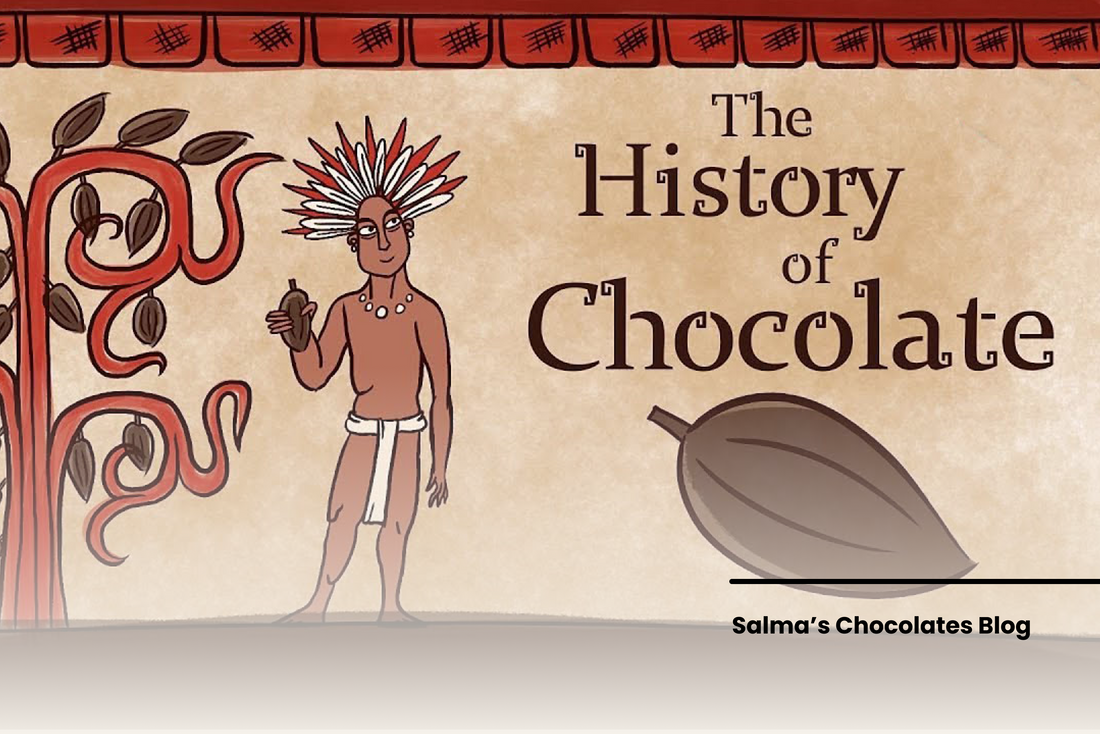
The History of Chocolate: A Journey Through Time
Share
Introduction
Chocolate, the beloved treat that brings joy to millions, has a rich and fascinating history that spans thousands of years. At Salma's Chocolates, we are passionate about the heritage of chocolate and how it has evolved into the exquisite delight we enjoy today. Join us as we journey through the ages, exploring the transformation of chocolate from ancient civilizations to the modern era.
Ancient Beginnings: The Mayans and Aztecs
The story of chocolate begins in the ancient Mesoamerican civilizations of the Mayans and Aztecs. As early as 1900 BCE, the Mayans were cultivating cacao trees and preparing a bitter, frothy drink made from cacao beans, water, and spices. This drink, known as "xocolatl," was consumed during religious ceremonies and believed to possess mystical properties.
The Aztecs, who succeeded the Mayans, also revered cacao. They used cacao beans as currency and considered chocolate a divine gift from the god Quetzalcoatl. The Aztec emperor Montezuma II was said to consume large quantities of the chocolate drink daily, believing it provided strength and vitality.
The Arrival of Chocolate in Europe
Chocolate made its way to Europe in the early 16th century, following the Spanish conquest of the Aztec Empire. Spanish explorers, including Hernán Cortés, brought cacao beans and the knowledge of chocolate preparation back to Spain. Initially, the bitter drink did not appeal to European palates, but it quickly gained popularity once sugar, vanilla, and cinnamon were added to sweeten the flavor.
By the 17th century, chocolate had spread across Europe, becoming a favorite indulgence among the elite. Chocolate houses, much like modern-day coffee shops, began to emerge, where the wealthy gathered to enjoy this exotic beverage.
The Industrial Revolution: Chocolate for the Masses
The 19th century brought significant advancements in chocolate production, making it more accessible to the masses. In 1828, Dutch chemist Coenraad van Houten invented the cocoa press, which separated cocoa butter from cocoa solids, leading to the creation of cocoa powder. This innovation paved the way for the production of solid chocolate.
In 1847, British chocolatier Joseph Fry developed the first chocolate bar by mixing cocoa powder, sugar, and cocoa butter. Shortly after, Swiss chocolatier Daniel Peter introduced milk chocolate by adding powdered milk to the mix, and his friend Henri Nestlé further refined the process. These innovations revolutionized the chocolate industry, making chocolate affordable and widely available.
Modern Innovations and Artisanal Revival
The 20th and 21st centuries have seen continued innovation in chocolate making. From the development of fine, single-origin chocolates to the creation of new flavors and textures, the art of chocolate making has reached new heights. Artisanal chocolatiers are now focusing on sustainability, ethical sourcing, and high quality ingredients, bringing chocolate back to its roots as a luxurious and cherished treat.
Conclusion
The history of chocolate is a testament to its enduring appeal and cultural significance. From ancient rituals to modern indulgence, chocolate has captivated hearts and taste buds around the world. We invite you to explore our collection and experience the timeless magic of chocolate for yourself.
